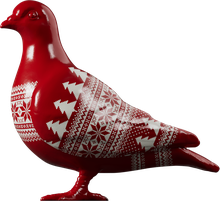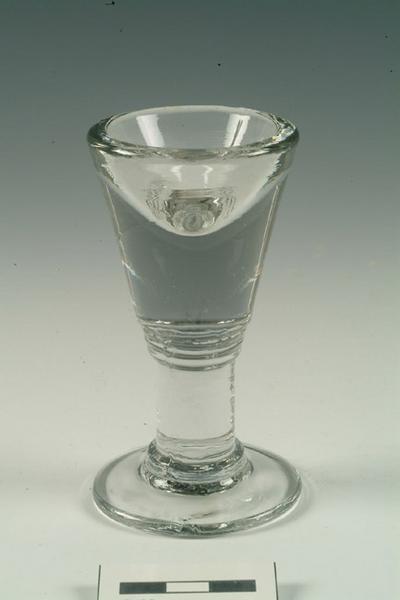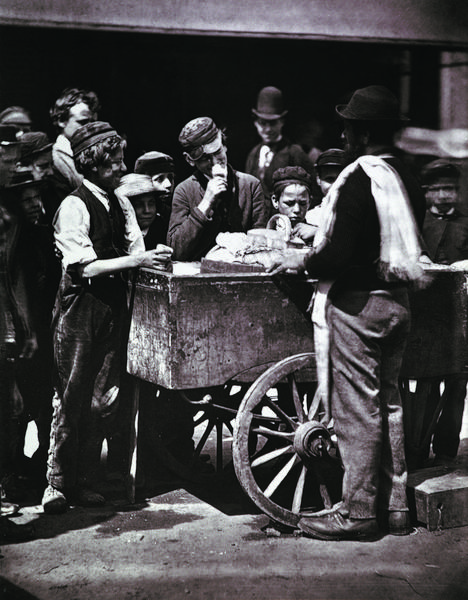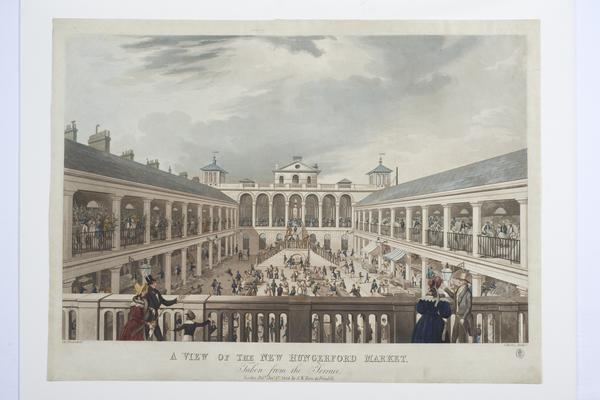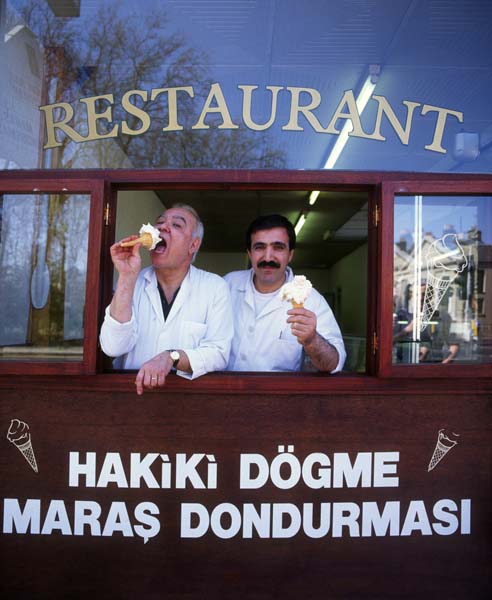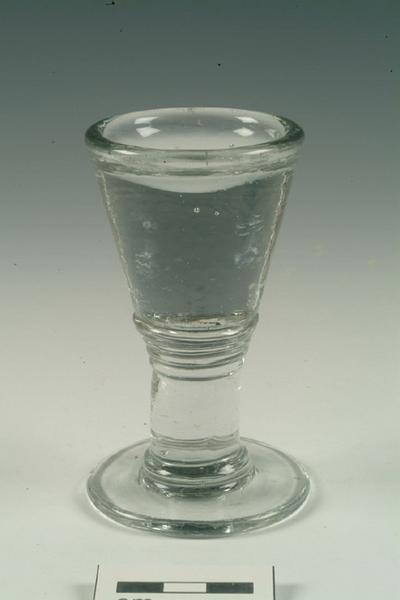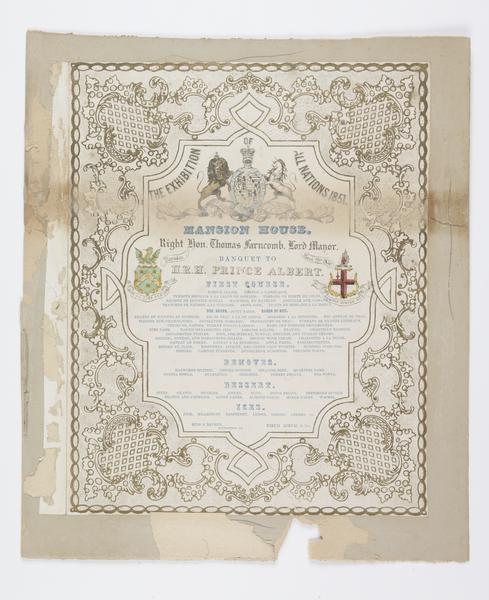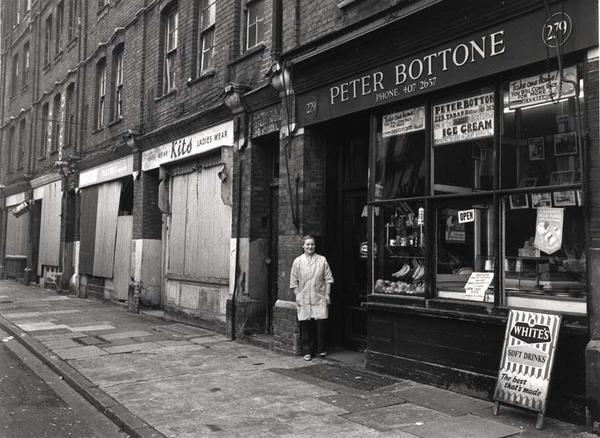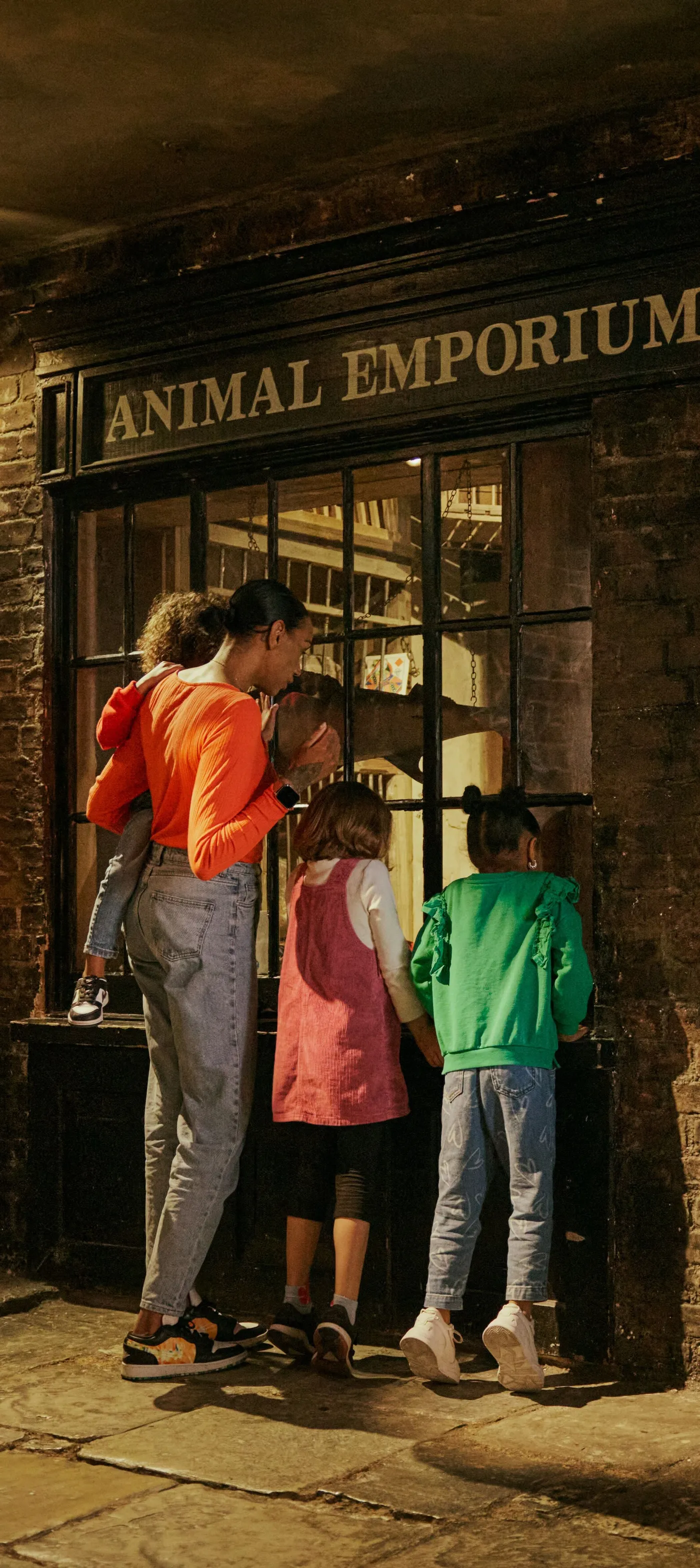You scream, we scream: A London history of ice cream
London has a long love affair with ice cream. Well before the invention of the freezer and the nostalgic chimes of ice cream vans, Londoners found innovative ways to enjoy all sorts of iced desserts. Scoops were even once sold in reusable – and disease-spreading – glasses called ‘penny licks’.
Across London
Since the 1600s
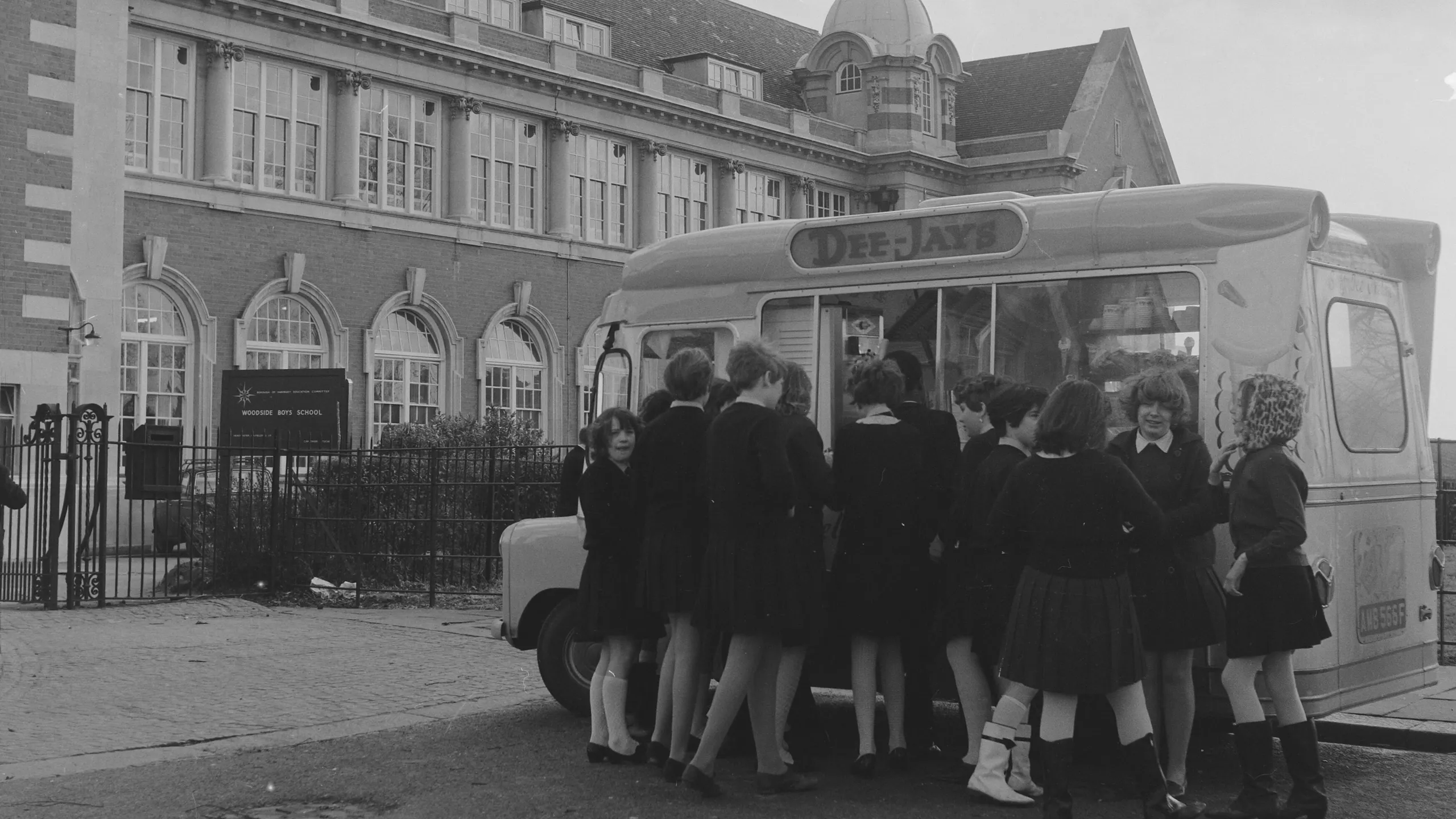
Where was ice cream invented? And who invented it?
The ice cream origin story is a topic of heated debate. Evidence for frozen desserts and iced drinks in Persia and China stretches back thousands of years. Ancient Greeks and Romans apparently enjoyed snow flavoured with honey or fruit. Ices with sweetened milk probably first hit Europe via the streets of Italy in the 1600s. King Charles II had England’s first recorded serving of the sweet stuff in 1672.
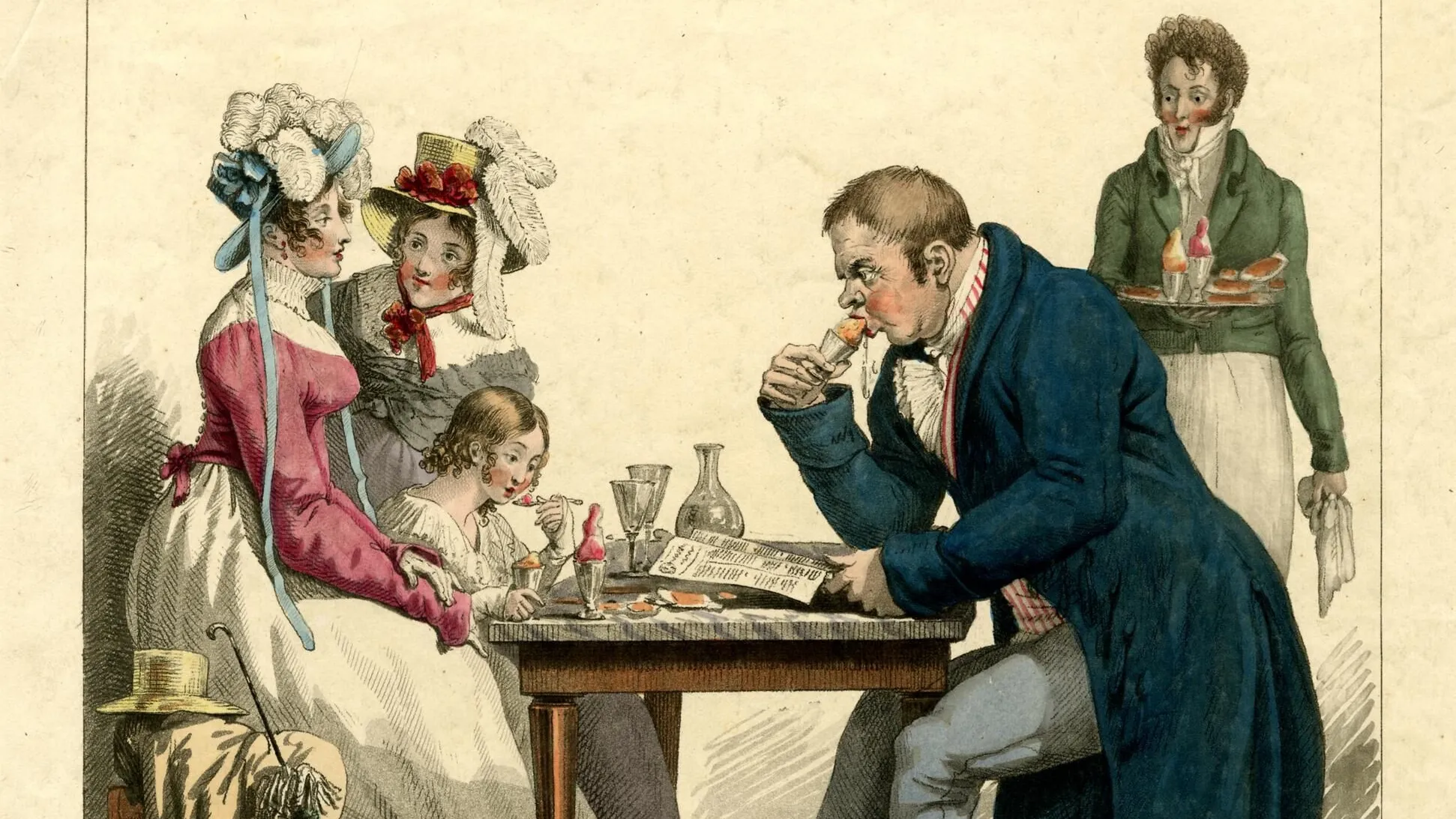
Georgian London went mad for ‘icy creams’
In the 1700s, ice cream parlours sprang up across the city selling some intriguing flavours – including orange blossom, jasmine and artichoke. Italian-born confectioner Domenico Negri had a particularly successful shop on Berkeley Square, Mayfair. Ice cream was a luxury only the rich could afford. Ingredients like salt, sugar, milk and eggs weren’t cheap. And ice had to be harvested elsewhere and stored in underground ice houses.
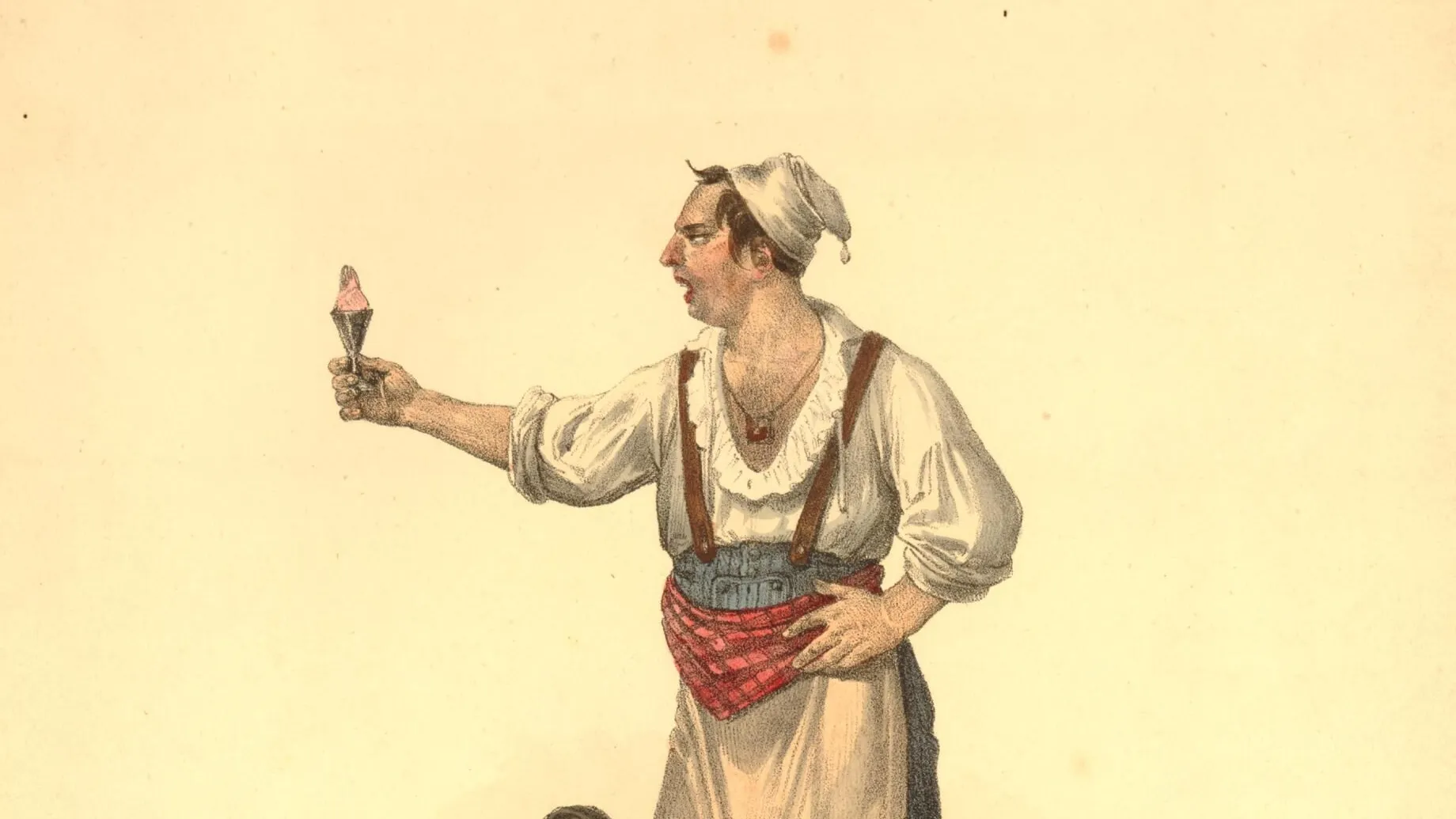
How were these ice creams made before freezers?
Ice cream was made using a ‘sorbetiere’. You’d pour the cream mix into a metal vessel. This was then placed into a wooden bucket filled with ice and, crucially, salt, which helps make the mixture colder. The mixture was then stirred and scraped from the sides using the sorbetiere's handle or a spoon. It was a laborious process. As there were no freezers back then, ice cream had to be eaten immediately.
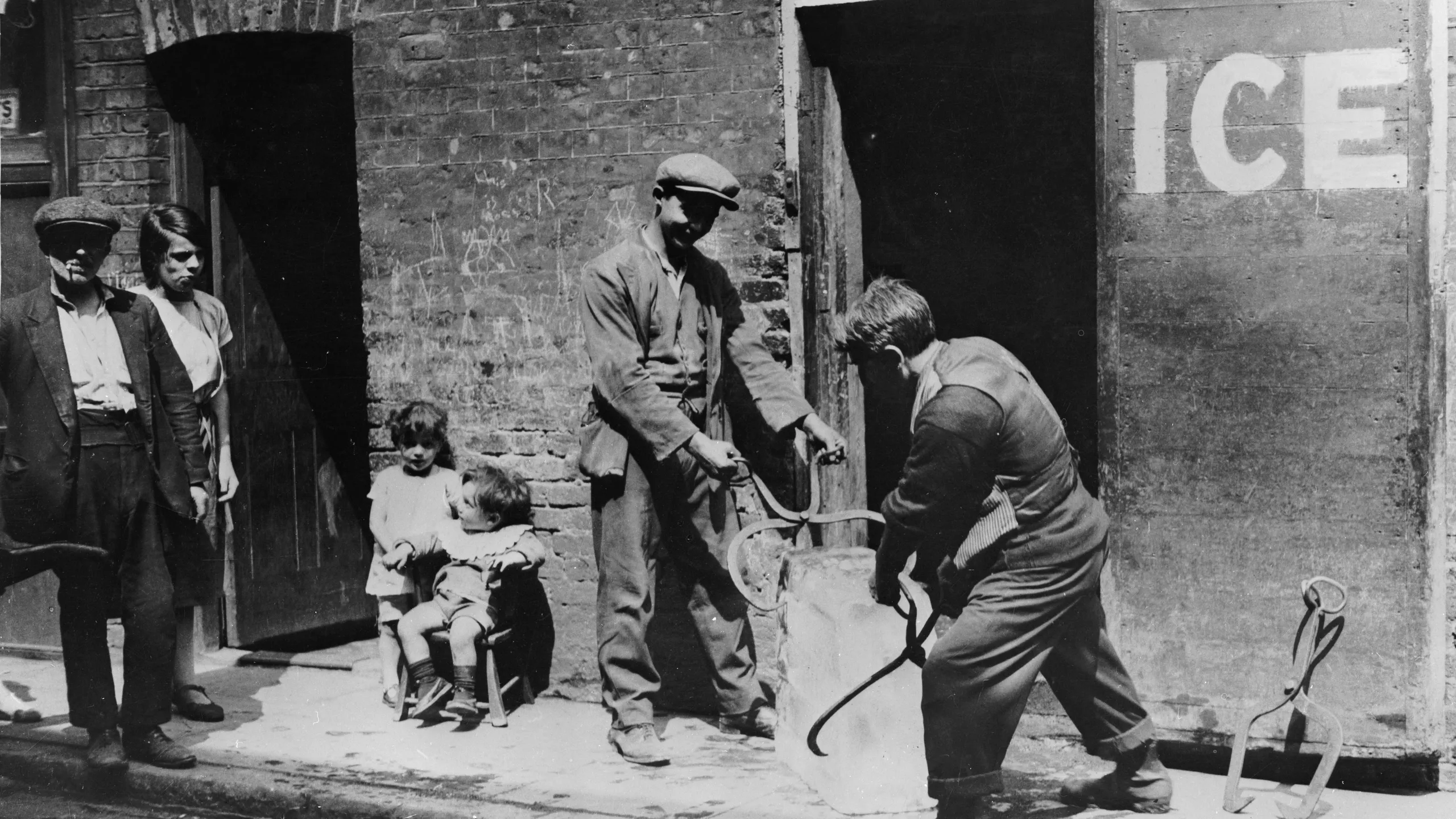
Ice cream became more widely available in Victorian London
The 1800s saw a boom in the ice trade. Blocks of the stuff were imported from the US and later from Norway, then transported by horse-drawn barges along Regent’s Canal to ice stores in Clerkenwell. Sugar had become cheaper as a direct result of the British trade in enslaved Africans. The crop was imported from the Caribbean, where enslaved people were forced to work on cane fields in brutal conditions.
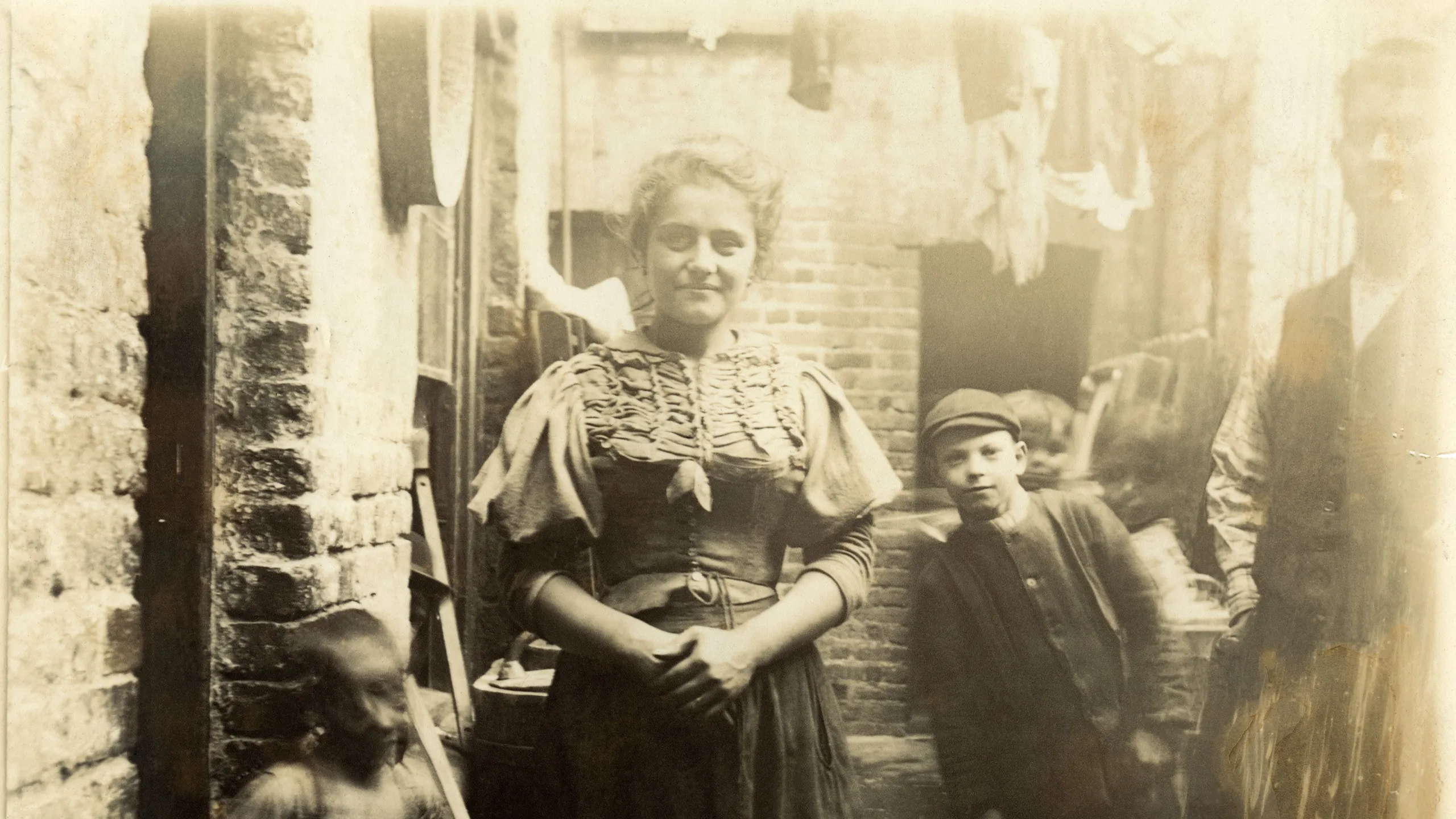
Carlo Gatti, Little Italy and the Italian ice trade
Italians migrated to London in large numbers from the 1830s. Many settled in Clerkenwell, Islington, which became known as Little Italy. Working-class Italian Londoners increasingly ran the ice trade and set up food businesses. Swiss Italian Carlo Gatti, who arrived in London in 1847, was both a successful ice merchant and ice-cream seller. He ran a stall at Hungerford Market near Charing Cross.

Ice cream took some getting used to
In the 1840s, journalist Henry Mayhew spoke to and reported on the breadth of London’s workers. He noted how the sale of ice creams was “unknown in the streets until last summer”. One dealer told Mayhew: “I don't think they'll ever take greatly in the streets, but there's no saying. Lord! how I've seen the people splutter when they've tasted them for the first time... They get among the teeth and make you feel as if you tooth-ached all over.”
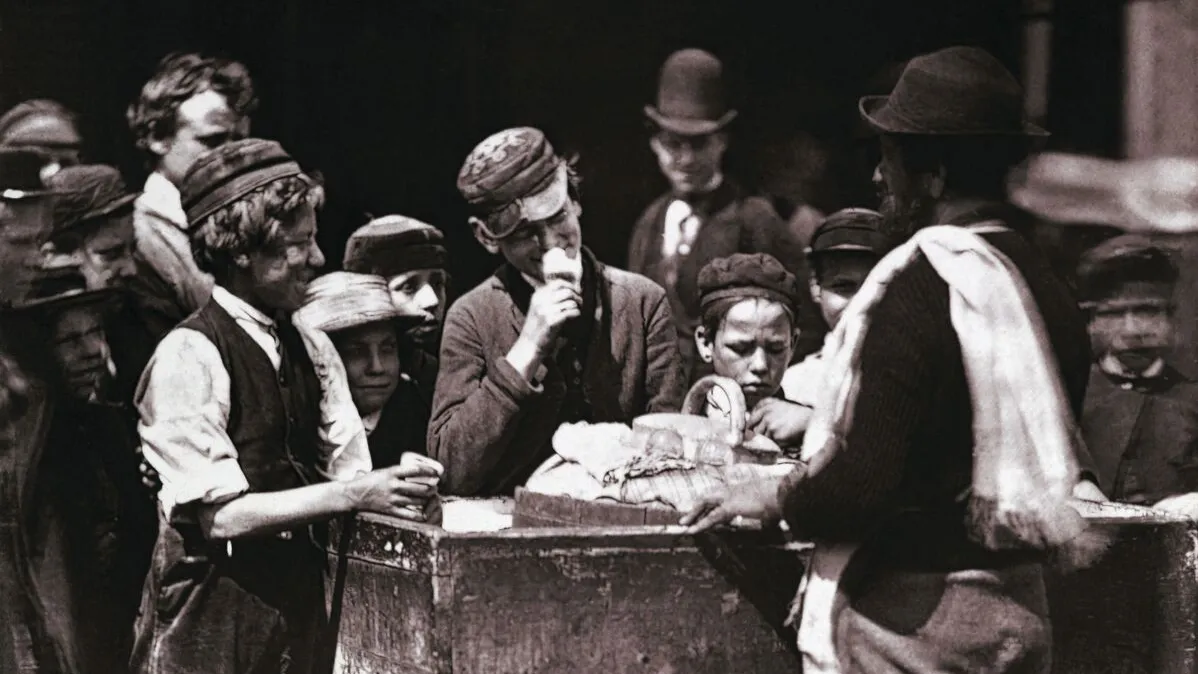
Penny licks made ice cream popular
Instead of being served in the wafer cone we’re used to today, ice cream was sold on the street in cheap glass containers called ‘penny licks’. For just a penny, you’d lick your scoop clean off the glass before returning it to the vendor. Sellers like Gatti helped push the penny lick to the masses. Sometimes, to try and make a bigger profit, they’d use glasses that were almost entirely filled in, making your scoop look bigger than it was.
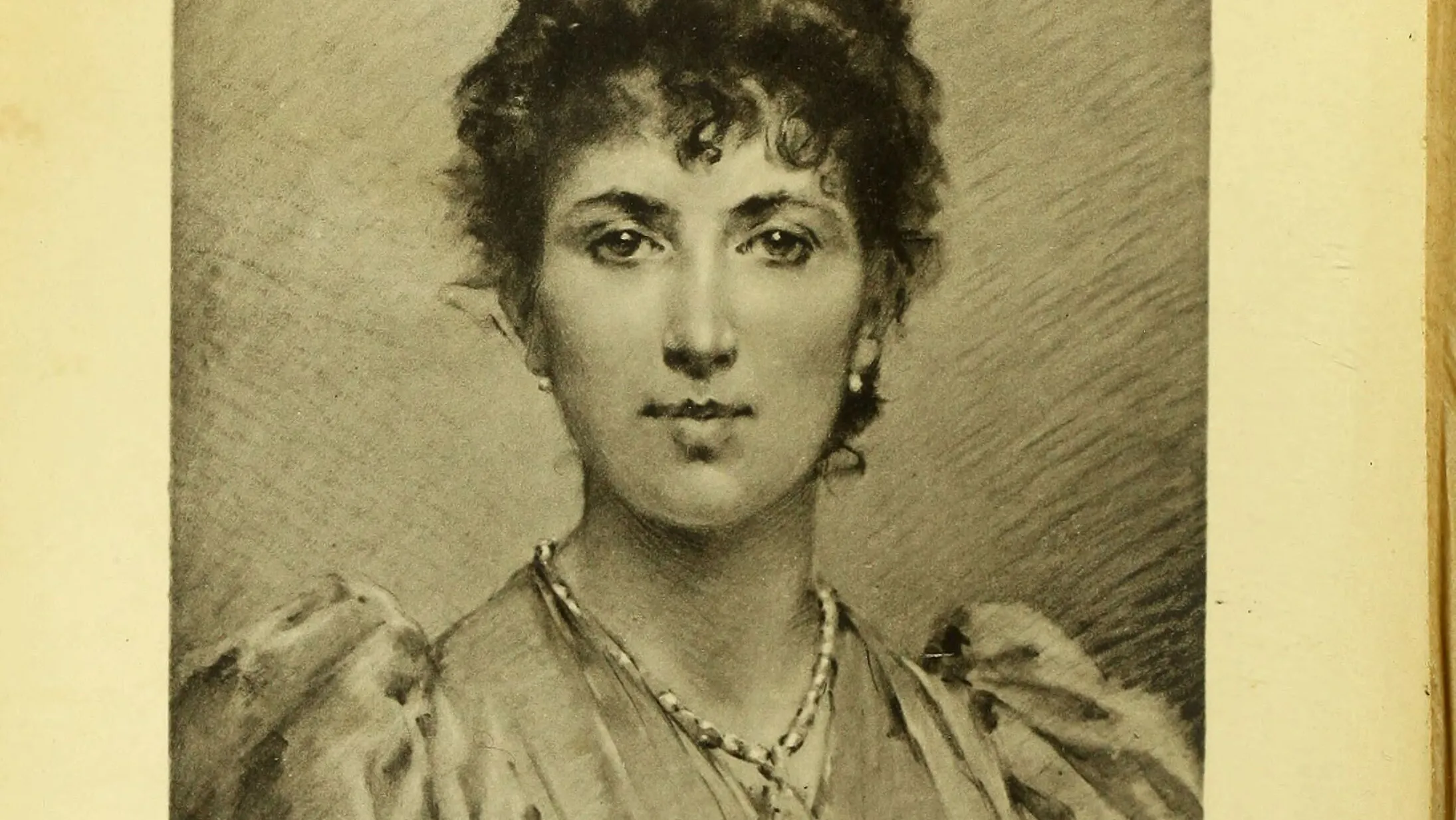
Agnes Marshall the Victorian ice cream queen
When the upper and middle classes wanted to impress guests with seriously spectacular desserts, they turned to the Victorian ‘Queen of Ices’: Agnes Marshall. In the late 1800s, this east London-born chef wrote two authoritative recipe books on iced desserts, and included many fancy ways of presenting them. Her 1888 cookbook featured one of the earliest published recipes for a cornet, or ‘cone'.

Penny licks were a public health hazard
Penny licks remained popular into the 20th century, even after the edible cone began to be used more widely. Cleaning standards back then weren’t what they are now – glasses would get a light rinse at best in between customers. Penny licks were eventually banned in London for spreading diseases like tuberculosis.
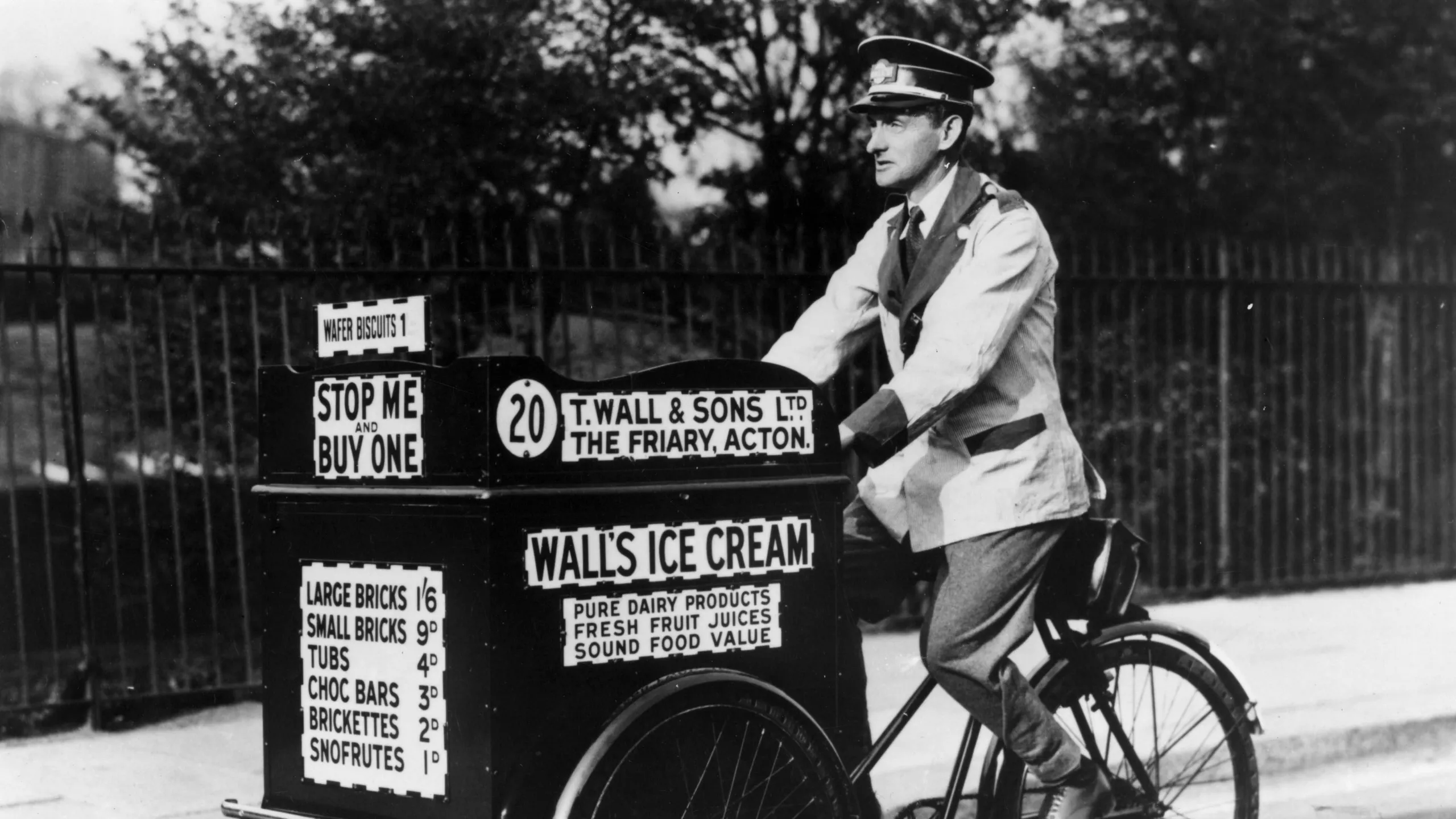
Wall’s ice cream tricycles
The musical chimes of London’s roving ice cream vans strike us with a happy nostalgia today. But before there were vans, Londoners flogged ice creams on three wheels. In 1922, the company T. Wall & Sons (now known as the dessert giant Wall’s) began making ice cream. They sold it on 10 company tricycles plastered with the slogan “Stop me and buy one”. By 1939, T. Wall & Sons had 8,500 tricycles on the road.
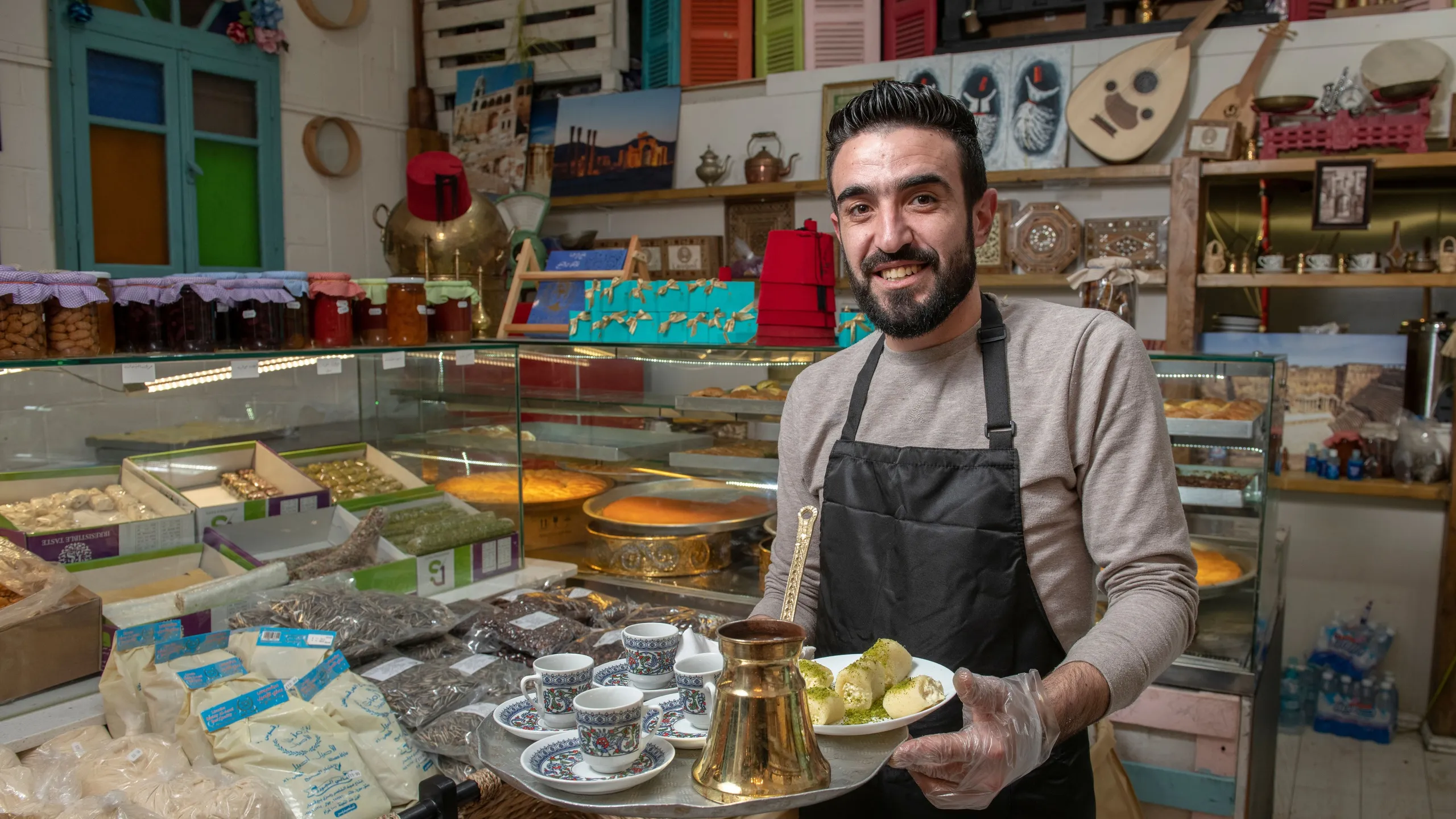
Ice cream in London today
Since the freezer found its way into Londoners’ homes in the second half of the 1900s, we now have ice cream on demand. Despite the city’s famously mild climate, there are frozen delights to be found all over the city. Beyond Italian gelato and the 99 flake, some of London’s best ice creams take the form of Afghan sheeryakh, Indian kulfi, Persian bastani sonnati and Syrian booza, as seen here at Park Royal’s Levant Book Cafe.

